How Much Is Your Home Worth?
Galveston Historic Homes
Step Inside the Island’s Architectural Legacy
Home - Galveston Real Estate - Historic Homes
Galveston wears its history on its sleeve, and nowhere is that more evident than in the neighborhoods where Victorian towers, Greek Revival columns, and weathered cottages still stand tall against time. Known as the “Queen City of the Gulf,” the island’s architectural legacy tells the story of prosperity, storms, resilience, and preservation.
Walking through these neighborhoods is like stepping into a living museum. Grand mansions that once hosted Galveston’s elite rise beside modest cottages built by craftsmen and dockworkers. From the oak-shaded streets of the East End Historic District to the seaside prestige of the Silk Stocking District, every block seems to carry whispers of another era.
For buyers, investors, and preservation enthusiasts, these aren’t just homes. They are cultural heirlooms, chapters of Galveston’s story written in wood, stone, and stained glass.
Galveston: Historical Architectural Styles
Galveston’s homes mirror the city’s layered history. Early merchant houses of the 1830s leaned toward Greek Revival symmetry, while the city’s late 19th-century boom birthed some of Texas’ most extravagant Victorians, ornate Queen Anne mansions with turrets and wraparound porches that flaunted Galveston’s wealth as a Gulf Coast port.
The 1900 Hurricane reshaped much of the city. Survivors of the storm were hoisted during the Grade Raising of 1904–1911, when entire blocks were elevated to new heights. These homes still stand as physical testaments to resilience. By the early 20th century, Craftsman bungalows and Colonial Revival styles reflected a more modest, yet equally enduring, chapter in Galveston’s story.
Today, the mix is striking:
• Greek Revival & Italianate: Classical facades with tall columns and symmetry.
• Queen Anne Victorians: Towers, turrets, stained glass, and gingerbread trim.
• Folk Victorian Cottages: Simple homes adorned with delicate woodwork.
• Craftsman Bungalows: Low-slung porches and practical beauty.
• Colonial Revival: Balanced proportions, early 20th-century sophistication.
On Broadway Avenue, landmarks like Bishop’s Palace, Moody Mansion, and Ashton Villa rise as icons of Galveston’s Gilded Age, admired far beyond the island.
Locating Galveston's Historic Homes
Historic homes are not confined to one corner of Galveston; they spill across the island in clusters and pockets:
• The East End Historic District, spanning more than 50 blocks, remains the crown jewel of preserved architecture.
• The Silk Stocking District, once home to Galveston’s social elite, pairs elegance with proximity to the Seawall.
• Along Broadway, the city’s most famous mansions line the corridor like sentinels of another era.
• In the Midtown District, you’ll find Folk Victorians and bungalows with approachable charm.
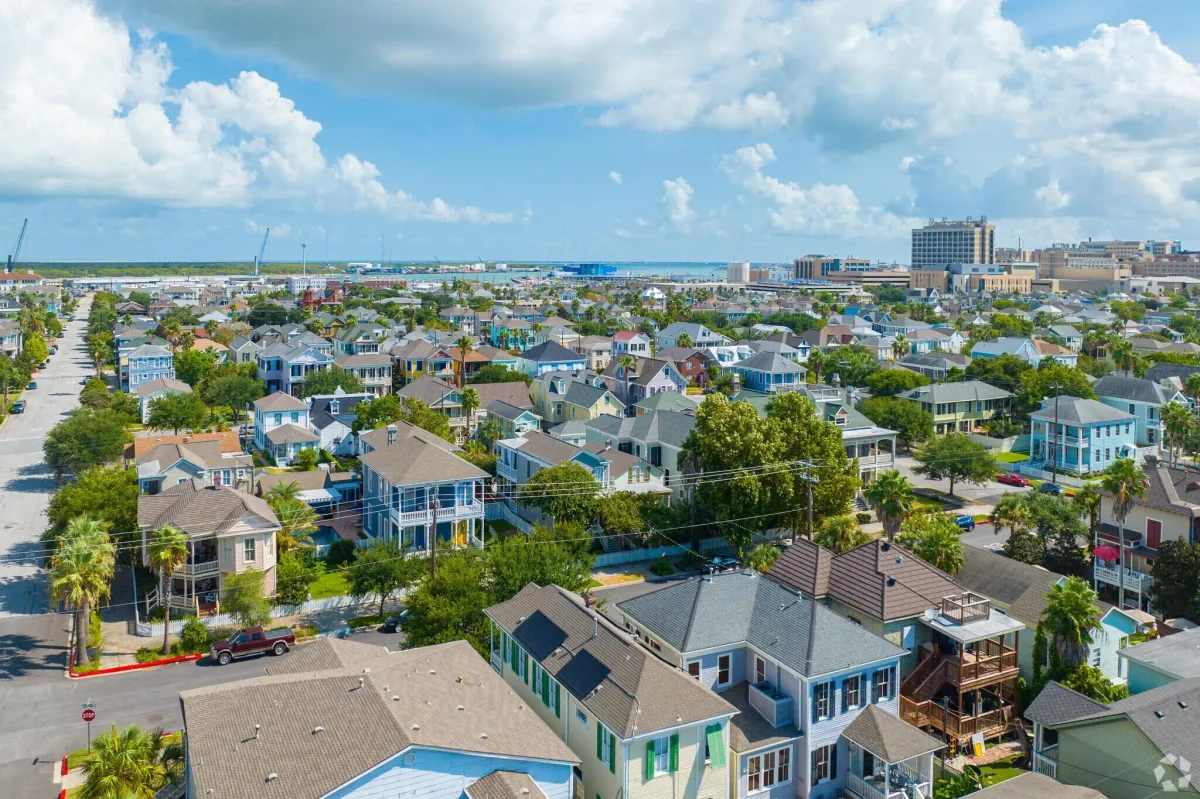
Galveston East End Historic District
The East End Historic District, spanning more than 50 blocks, remains the crown jewel of preserved architecture.
The East End Historic District in Galveston is more than a neighborhood, it’s a living showcase of the island’s architectural and cultural legacy. Stretching across more than 50 blocks, this National Historic Landmark District is defined by its Victorian mansions, colorful cottages, and oak-shaded streets that whisper stories of the past. Many of its homes survived the devastation of the 1900 Hurricane, standing today as testaments to resilience and preservation.
Life in the East End offers the best of both worlds: historic character and modern convenience. Residents can walk to the nearby [[Strand Historic District]], browse eclectic shops, or enjoy dining at local restaurants, all while being surrounded by Galveston’s finest collection of preserved architecture. For buyers and investors, the district represents more than real estate; it’s an opportunity to join a community dedicated to safeguarding Galveston’s history, heritage, and architectural beauty.
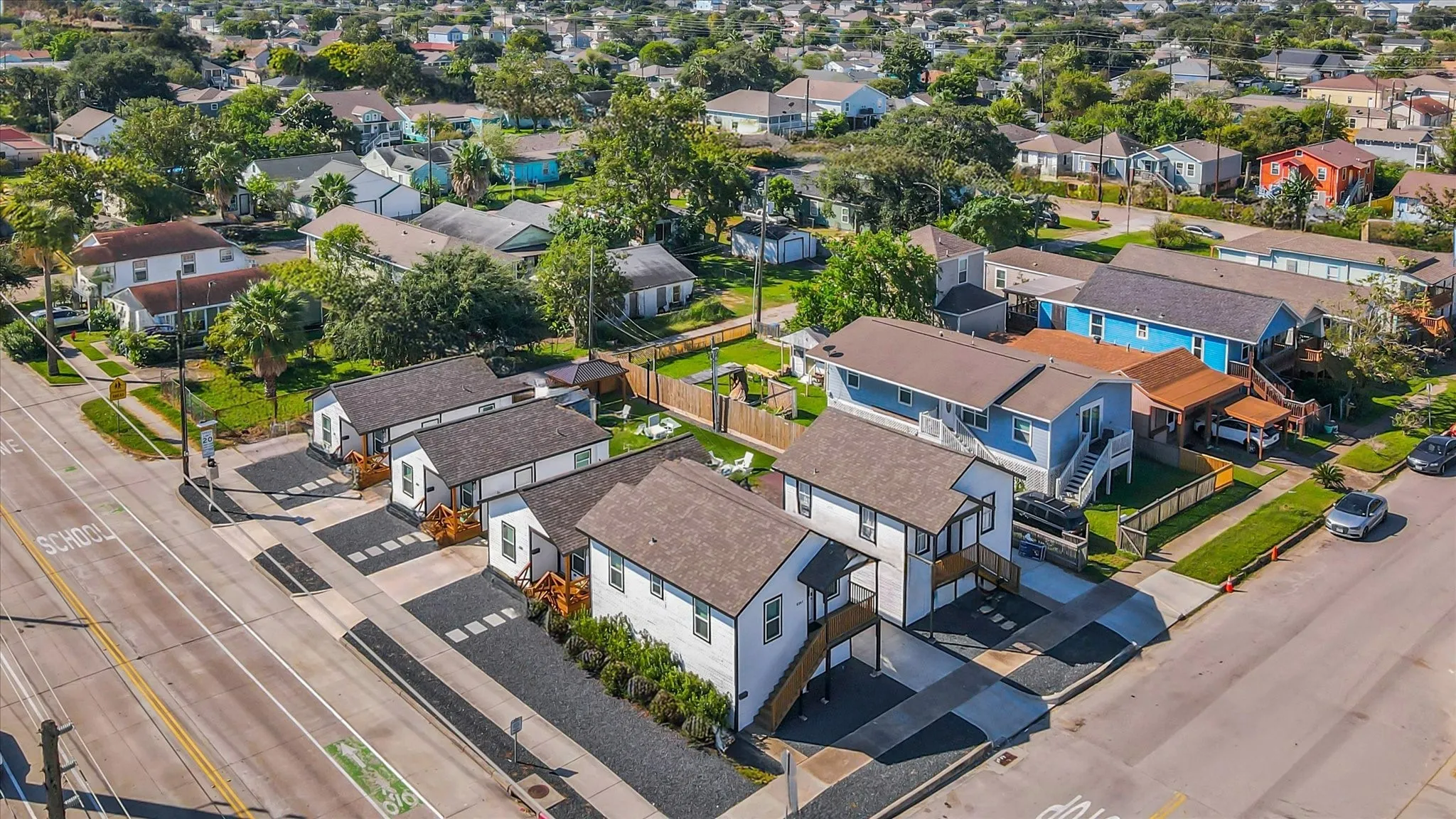
Galveston Midtown District
Between Broadway and the Seawall, the Midtown District offers a different flavor of historic living. Here, you’ll find Folk Victorian cottages, early 20th-century Craftsman bungalows, and mid-century homes, often side by side. The result is an eclectic, approachable neighborhood with a strong sense of character.
Unlike the formal grandeur of the East End or Silk Stocking District, Midtown feels casual and lived-in. Residents enjoy easy access to everything. For buyers, this area often presents more affordable options with just as much historic charm.
The Midtown District is ideal for those who want a balance: the character of a historic home without the prestige pricing of Galveston’s more famous districts.
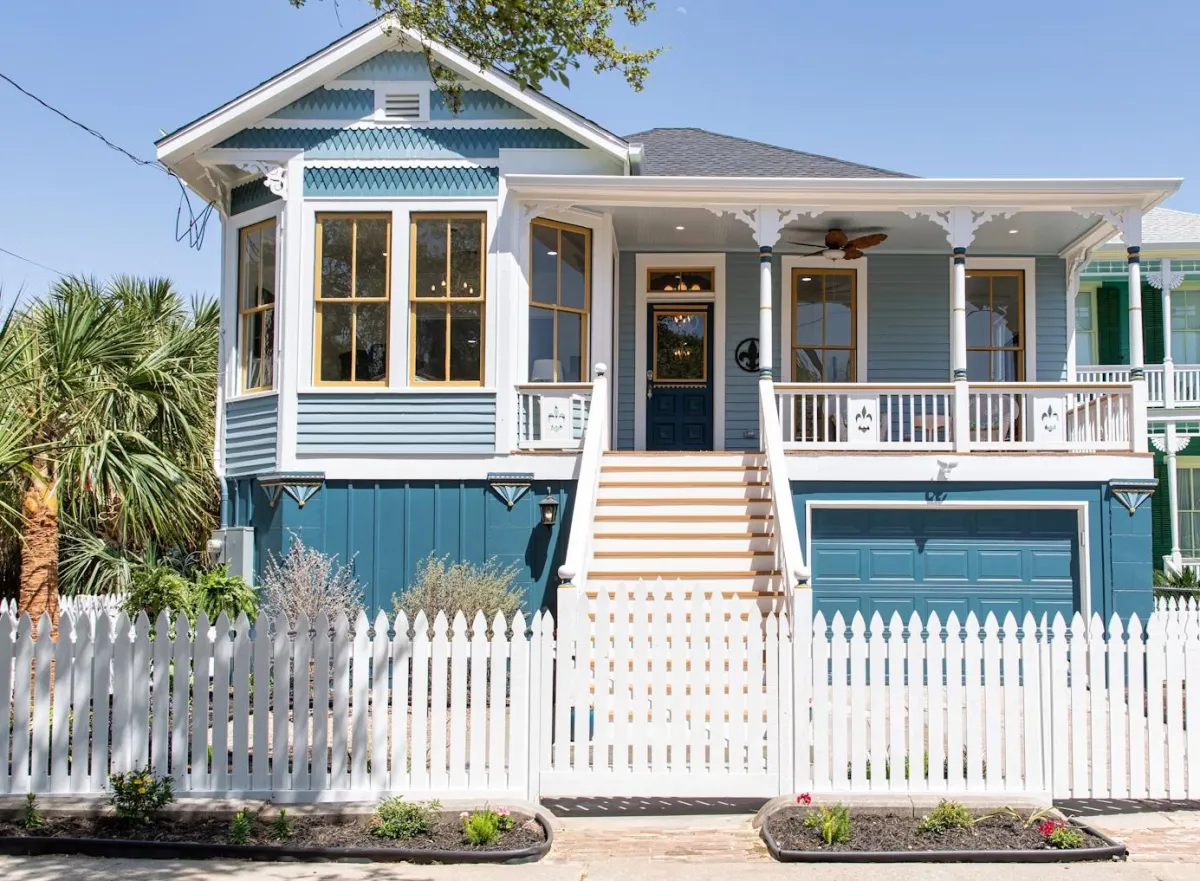
Silk Stocking District
If the East End represents Galveston’s largest collection of historic homes, the Silk Stocking District captures its prestige. Once home to many of Galveston’s early elite, this neighborhood flourished in the late 19th and early 20th centuries when prosperity from shipping and commerce filled the island with wealth.
Tree-lined streets near the Seawall feature a graceful mix of Victorian, Colonial Revival, and Craftsman architecture, with wide porches that catch the Gulf breeze. Preservation here is strong, but so is the sense of pride, residents often speak of belonging to one of Galveston’s most desirable enclaves. Proximity to the beach and downtown makes the district attractive to both year-round residents and buyers looking for second homes.
For those who want to live at the intersection of elegance, history, and convenience, the Silk Stocking District remains one of the city’s most enduring neighborhoods.
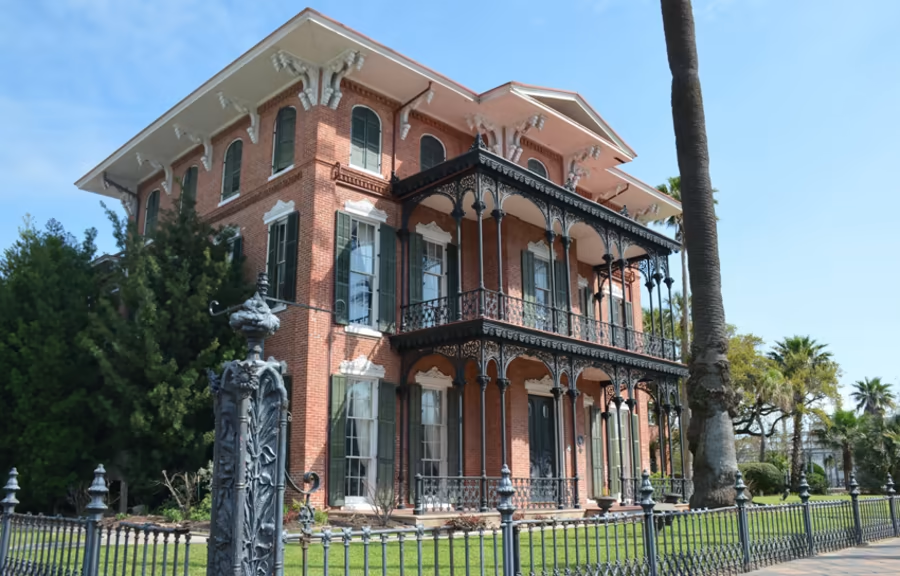
Historic Homes on Broadway
Few streets in Texas rival Broadway Avenue J for architectural impact. Known locally as “Mansion Row,” this wide boulevard is lined with some of Galveston’s most recognizable landmarks. Bishop’s Palace, often considered one of the finest Victorian homes in the United States, dominates the corridor with its stone façade and stained glass. Nearby, the Moody Mansion showcases Romanesque Revival grandeur, while Ashton Villa, built in 1859, remains one of the earliest brick homes in Texas.
But Broadway isn’t only about landmarks. Alongside these famous estates are dozens of historic homes that survived the 1900 Hurricane and the subsequent Grade Raising, creating a living gallery of architecture. From elegant mansions to modest yet resilient cottages, the street tells the story of Galveston’s rise, devastation, and rebirth.
For anyone interested in Galveston’s historic homes, Broadway/Avenue J is an essential part of the narrative, a place where the city’s architectural identity is on full display.
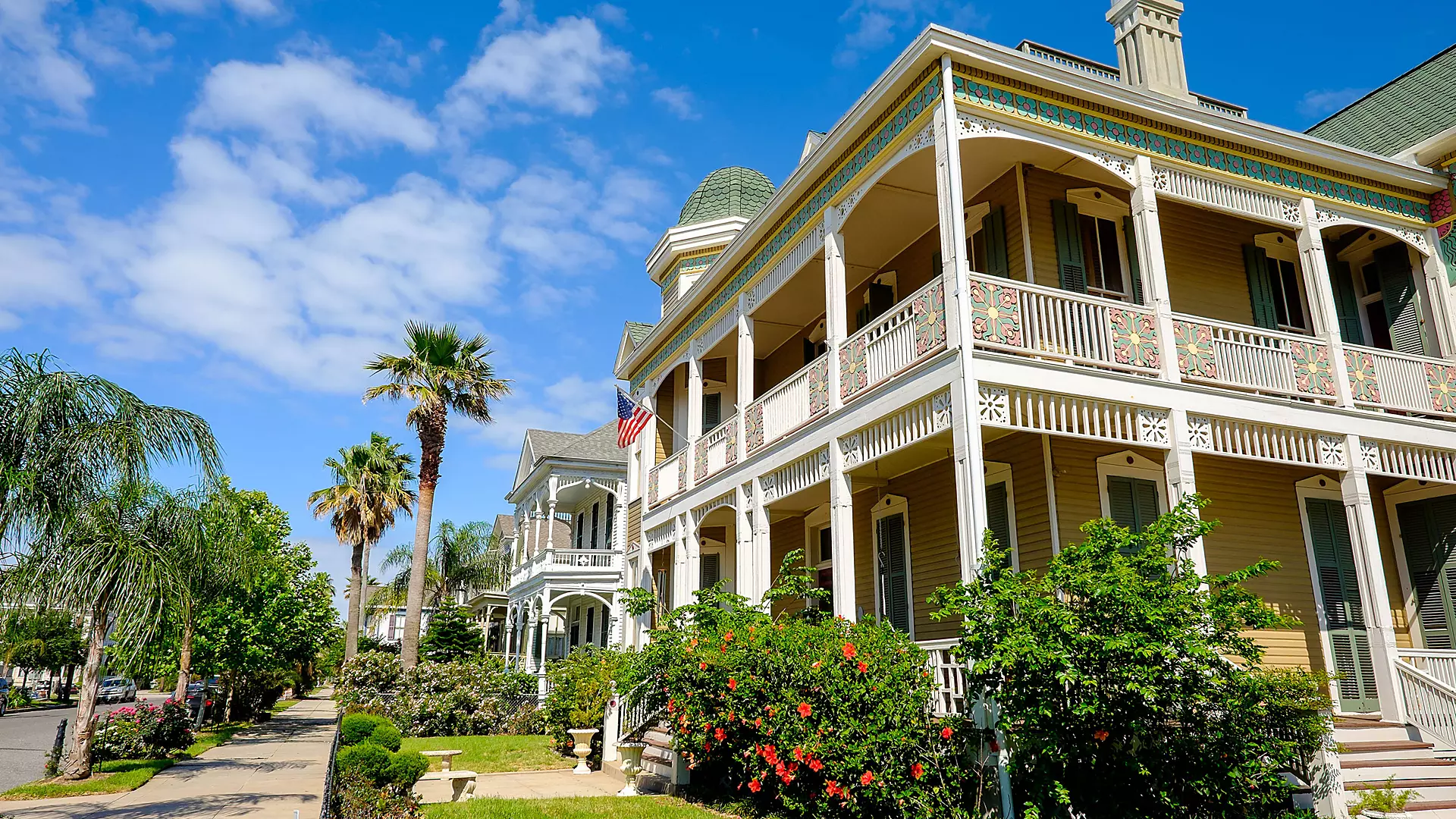
Locating Galveston's Historic Homes
Life in Galveston’s historic neighborhoods is as much about community as architecture. Residents often find themselves part of preservation associations, such as the East End Historic District Association, where neighbors rally to maintain the integrity of their streetscapes.
The Galveston Historical Foundation’s Annual Historic Homes Tour invites the public to peek inside carefully restored residences, a tradition that blends tourism with education and inspires stewardship. Festivals, workshops, and neighborhood walks celebrate heritage while strengthening ties among residents.
The Responsibilities of Preservation
Owning a historic home in Galveston is both a privilege and a responsibility. Renovations are often overseen by the city’s Landmark Commission, which ensures that exteriors preserve authenticity. Original windows, wood siding, and ironwork are often prioritized, though financial incentives like tax abatements and restoration grants can ease the burden.
Practical realities also come into play. Many historic homes sit in flood-prone zones, requiring flood insurance, while windstorm coverage through TWIA is essential. Buyers need to be mindful of maintenance costs, but those who restore and modernize wisely often find insurance premiums manageable.
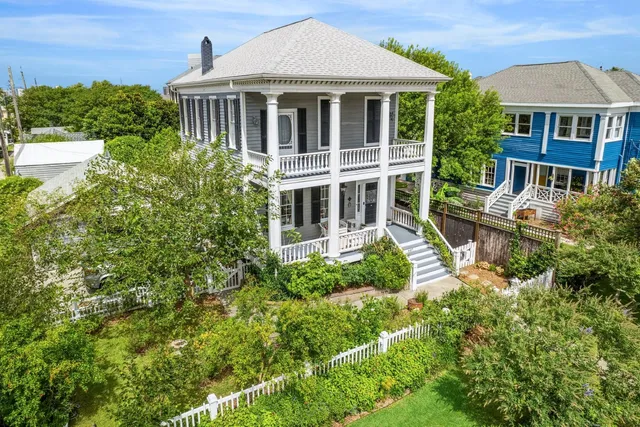
Investment, Rentals & the Market
Historic homes aren’t just lifestyle choices, they can also be investments. Their charm makes them popular for short-term rentals and boutique vacation properties, though compliance with both city regulations and preservation rules is key.
Still, many owners prefer to buy these properties as primary residences or long-term family legacies. Protected districts help stabilize value, ensuring that Galveston’s most distinctive homes remain safeguarded against unchecked development.
Why Buyers Choose Historic Homes
• Architectural character impossible to replicate today.
• Cultural connection to the island’s storied past.
• Prestige and beauty admired across Texas.
• Walkable lifestyle close to beaches, downtown, and community.
• Preservation safeguards that help sustain value.
Each neighborhood offers a different flavor: the East End Historic District for concentration and community, the Silk Stocking District for prestige, Midtown District for eclectic charm all nestled within an active Downtown/Strand area and just minutes away from the coastal waves at the beach.
Galveston’s historic homes aren’t relics; they’re living, breathing parts of the island. They endure storms, adapt to change, and continue to house generations who fall in love with their charm. Whether you’re a preservationist, a dreamer, or a buyer searching for something one-of-a-kind, these homes offer more than shelter. They offer a story, and the chance to add your chapter to Galveston’s ever-unfolding history.

Working with Your Local REALTOR®
Galveston’s mix of historic preservation districts and coastal developments requires a REALTOR® who knows more than just the numbers. Local expertise matters for navigating insurance for coastal properties, HOA/POA rules, renovation approvals, permits for zoning and coastal building rules, or even short-term rental zoning. Choosing a Galveston Realtor with island-specific knowledge ensures smoother transactions and better outcomes!
Susanna Mayberry, REALTOR® – Contact Me
ABR – Accredited Buyer’s Representative
CNE – Certified Negotiation Expert
GRI – Graduate REALTOR® Institute
SRS – Seller Representative Specialist
Learn more: Work With A Local Realtor
Frequently Asked Questions (FAQ)
What is the most famous historic home in Galveston?
Bishop’s Palace is the most iconic, often called one of the most significant Victorian homes in the U.S.
Are all historic homes protected by preservation laws?
Not all of them. Homes within designated districts (East End, Silk Stocking, etc.) have stricter rules. Others may simply be old but not landmarked.
Do historic homes cost more to maintain?
Generally yes, due to original materials and preservation standards. However, tax abatements and grants can offset costs.
Can I modernize the inside of a historic home?
Yes, interiors are more flexible. Most preservation rules apply to exteriors.
Are historic homes good for rentals?
Some of them. Many operate as STRs or boutique inns, though compliance with city regulations is required. Check with a local REALTOR for a specific historic home listing.
Coffee With Susanna
Let's discuss your real estate goals over coffee.

Let's Talk
Get In Touch
Susanna Mayberry





